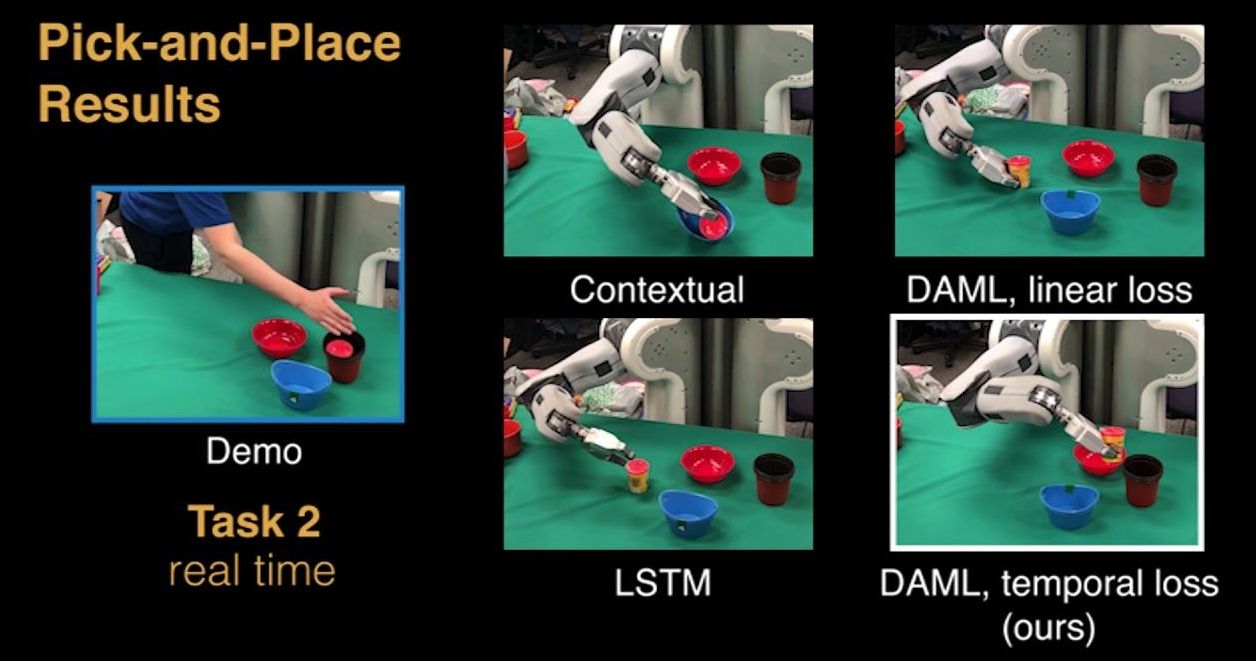A team of researchers at UC Berkeley has found a way to get a robot to mimic an activity it sees on a video screen just a single time. In a paper they have uploaded to the arXiv preprint server, the team describes the approach they used and how it works.
Robots that learn to do things simply by watching a human carry out an action a single time would be capable of learning many more new actions much more quickly than is now possible. Scientists have been working hard to figure out how to make it happen.
Historically though, robots have been programmed to perform actions like picking up an object by via code that expressly lays out what needs to be done and how. That is how most robots that do things like assemble cars in a factory work. Such robots must still undergo a training process by which they are led through procedures multiple times until they are able to do them without making mistakes. More recently, robots have been programmed to learn purely through observation—much like humans and other animals do. But such imitative learning typically requires thousands of observations. In this new effort, the researchers describe a technique they have developed that allows a robot to perform a desired action by watching a human being do it just a single time.
